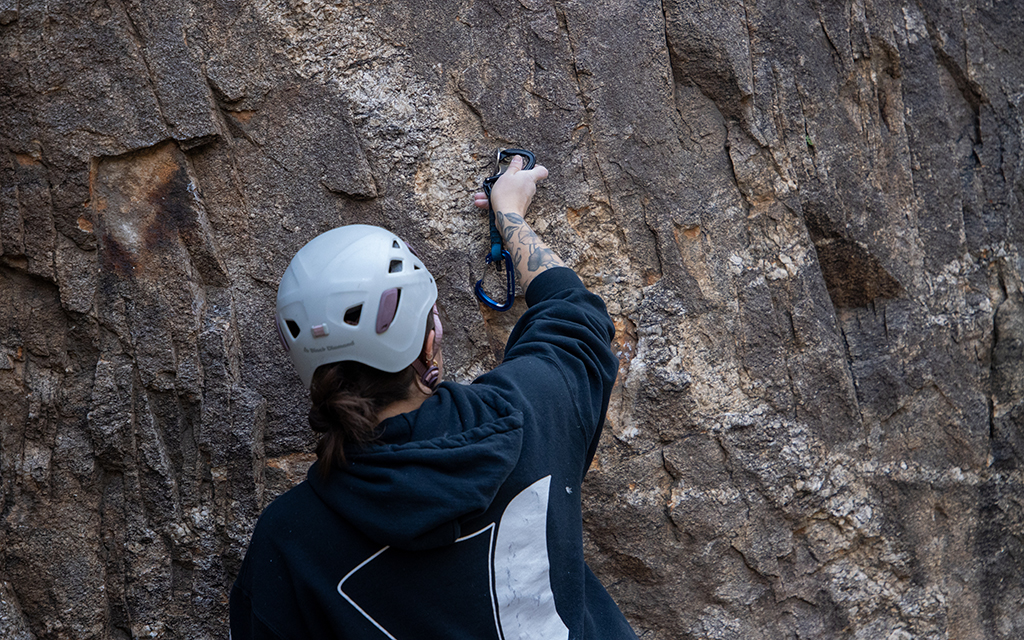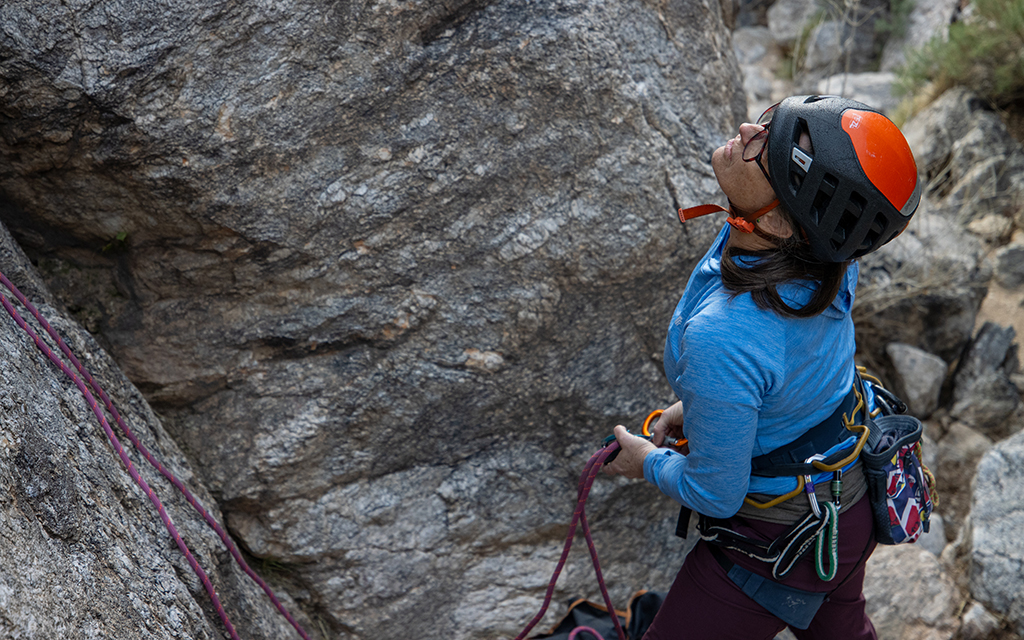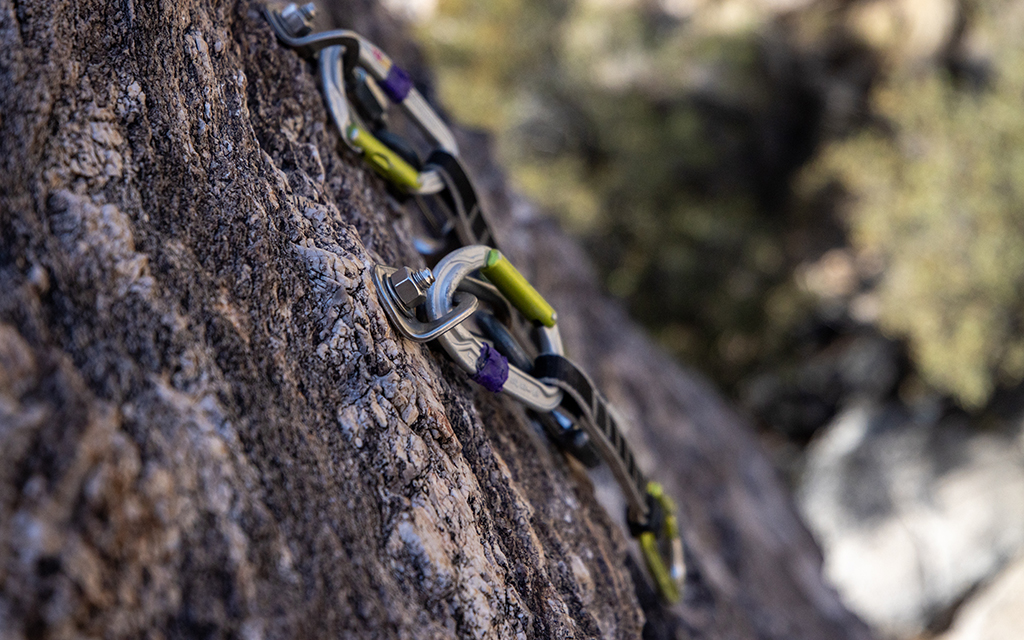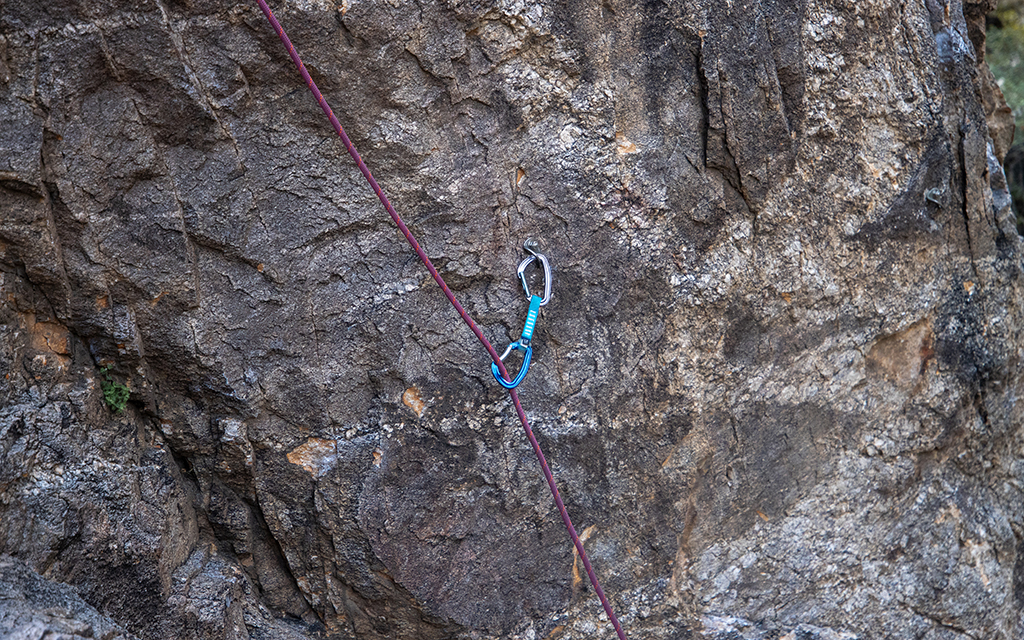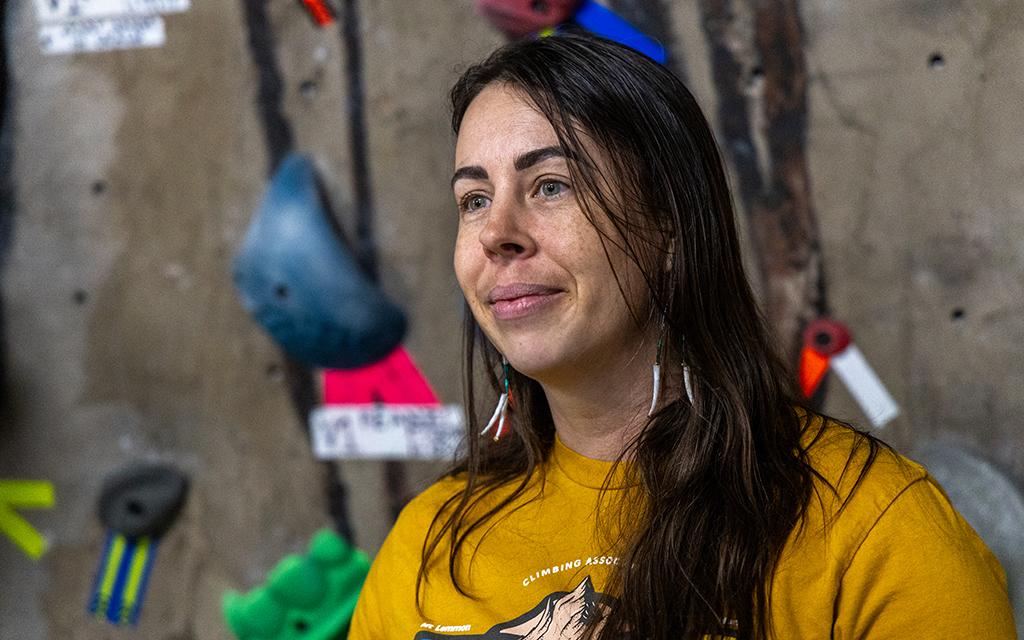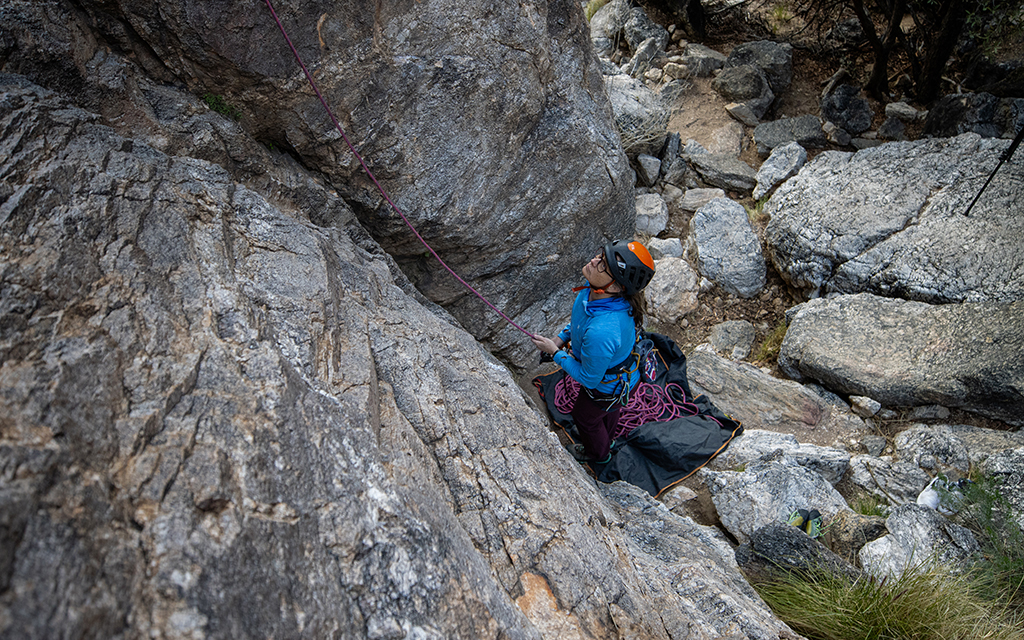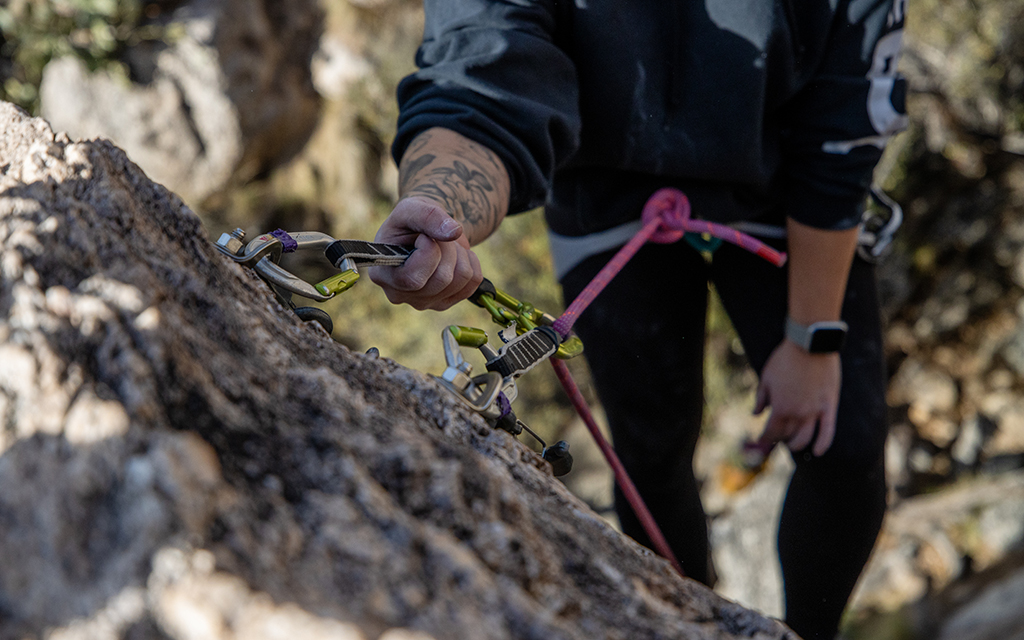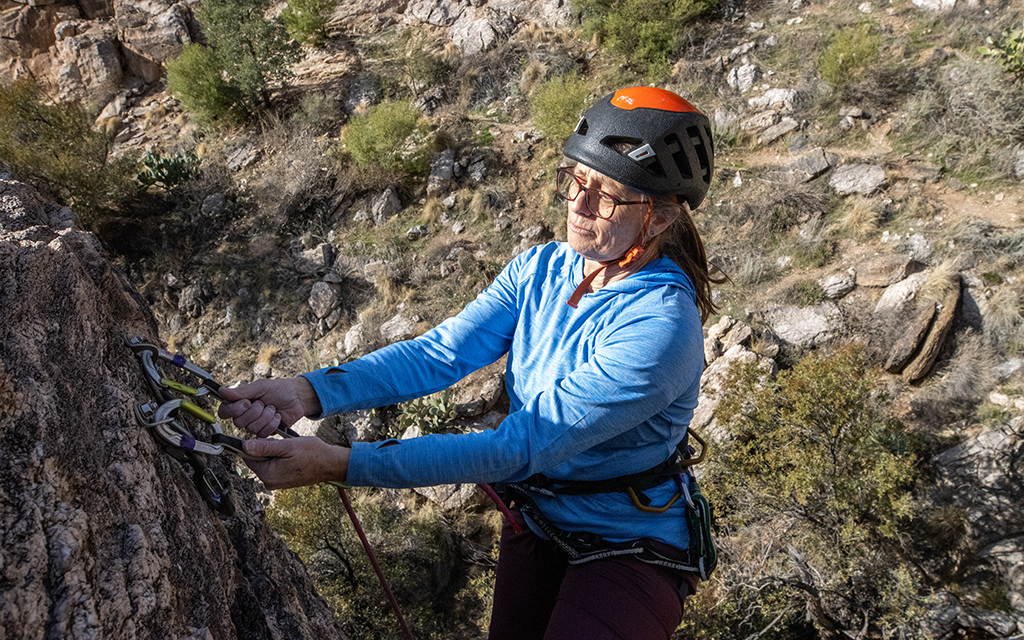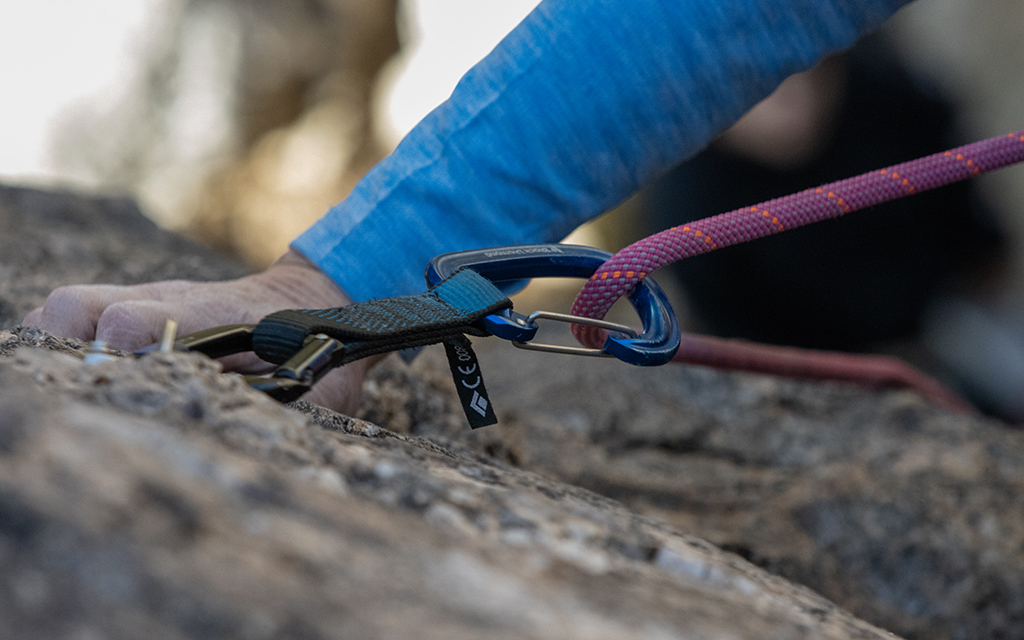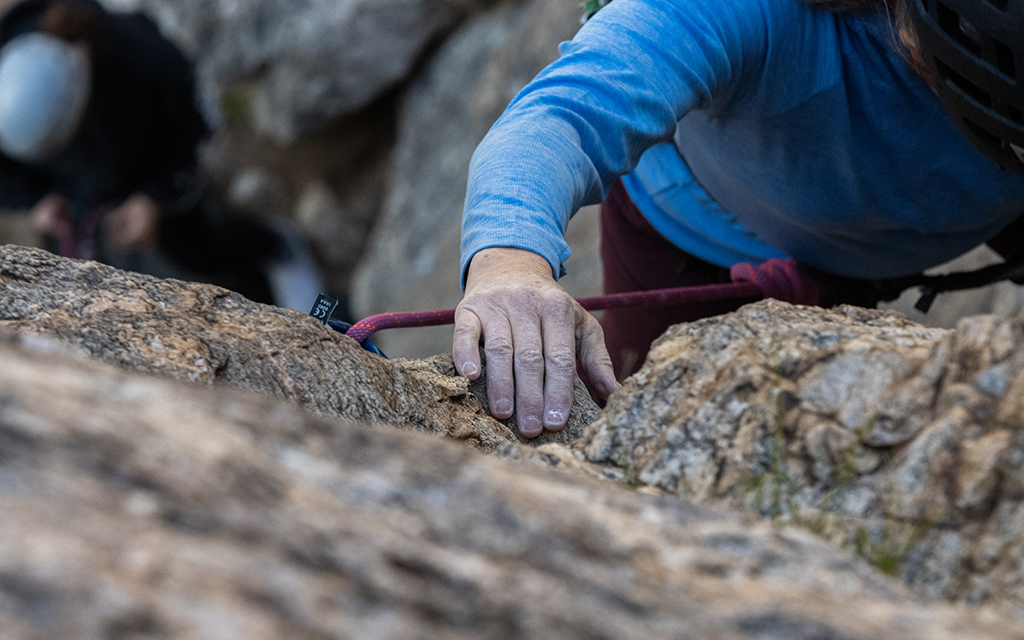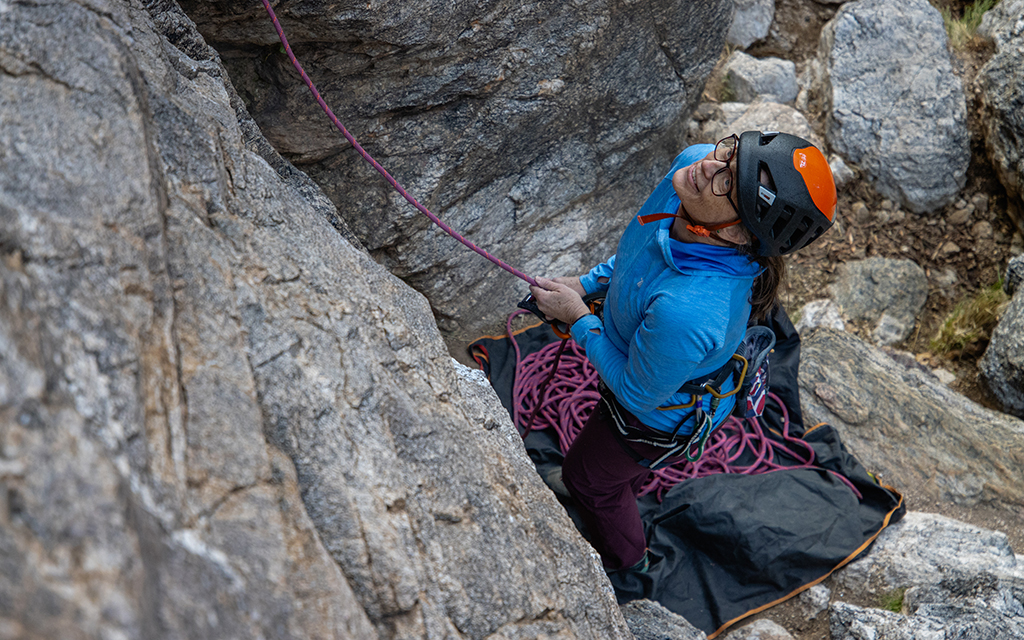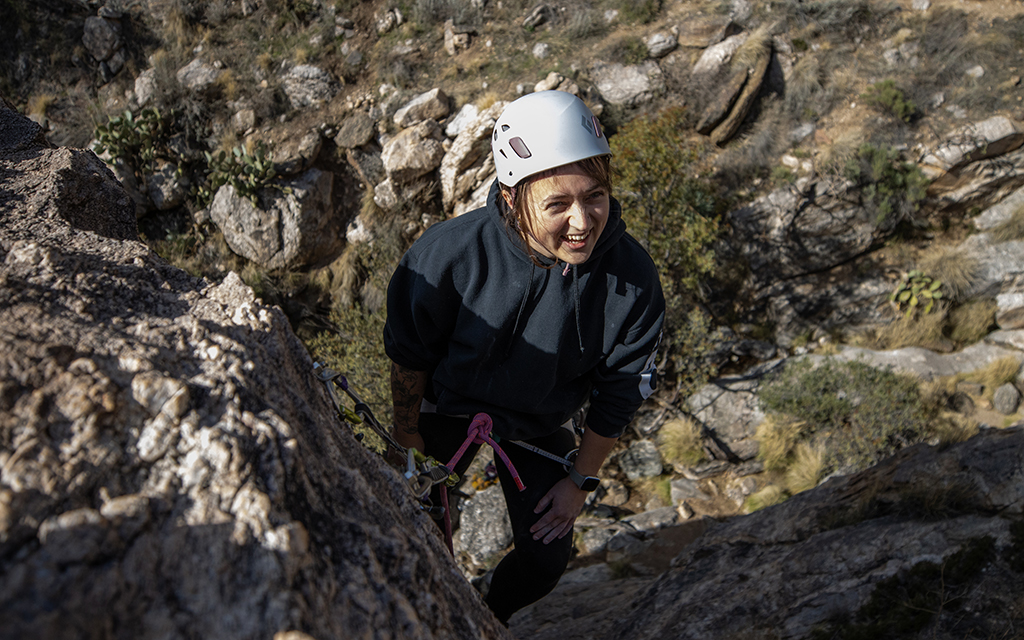- Slug: BC-CNS-Climbing Anchors,640 words.
- 15 photos available (thumbnails, captions below)
By Naomi DuBovis
Cronkite News
TUCSON – It’s a bright and early Monday morning on Mount Lemmon. The landscape of steep slopes is full of boulders, shrubs and tall saguaro cactuses. Gunshots from the shooting range nearby can be heard faintly.
Climber Nicki Manzanares is making her ascent up a cliff wearing a harness adorned with clips and a brightly colored rope. Kait Junek, who is standing at the bottom, is controlling the rope and wearing a harness herself.
As Manzanares makes her way up the jagged crevices of the mountain, she attaches her quickdraw, which has two carabiners, to an anchor. “Clipping!” she says to Junek after each anchor until she reaches the top.
These bolted anchors are in several areas throughout the mountain, and climbers use them to move up and down safely.
But the National Park Service and the U.S. Forest Service drafted policy in November that could prohibit them. Wilderness areas around the country, including Mount Lemmon, would be affected by these policies if they go through. The Climbing Association of Southern Arizona is one of several climbing organizations speaking out against the proposals, saying that they would discourage and endanger climbers.
Because Mount Lemmon is part of the Coronado National Forest, its climbing routes are subject to the policies of the U.S. Forest Service. The anchor proposal would amend the Forest Service Manual to include additional rules for climbing in wilderness areas, including “guidance on fixed anchor and fixed equipment placement and replacement by climbers” that would limit the use of unreviewed anchors.
But if the policy goes through, anchors won’t be removed right away. The amendment would require a minimum requirements analysis for both existing bolts and any bolts that are set for installation. The Forest Service proposal says these examinations are “to determine whether they are the minimum necessary for administration of the area for Wilderness Act purposes.” Bolts that are installed in emergency situations will still be allowed.
Maggi Dawson, the treasurer of CASA, said she is most concerned about climbers’ safety in impacted areas.
“The biggest issue I see with the proposal is that it says there’s no plan for bolt replacement allowed, no plan for fixed anchor replacement,” she said. “So as those bolts degrade and they’re no longer safe, we’ll have to wait for a minimum requirements analysis to go through, and that process could take months.”
The proposal notes the analysis would be completed “as funding and resources allow.”
Dawson also said the potential environmental impact of restricting climbing routes. She said climbing routes not affected by the policy will become more congested.
A U.S. Forest Service spokesperson said in an emailed statement that it “would be premature to speak to the specifics of … how this would affect each individual forest across the country” until it has a chance to review public comments on the plan. The public comment period closed Jan. 30.
“The proposed guidance clarifies that climbing is an appropriate activity on Forest-Service managed lands,” the emailed statement said. “Like any recreational activity, climbing can also damage natural and cultural resources.”
Manzanares, who is the president of CASA, said climbers are invested in reducing this damage as much as possible.
“Climbers are tremendous stewards of the land,” she said. “We work on trails to make sure that they’re maintainable so that we can have access to these areas.” She also said that organizations like CASA advocate for Leave No Trace principles.
Manzanares said the main priority is raising awareness of the issue before the National Park Service and U.S. Forest Service make a final decision.
“We’re just trying to just get the word out, get people involved,” she said. “Then, I think it would come to continuing communicating with the Park Service, Department of Agriculture, Forest Service and Department of the Interior to see where they’re headed with this.”
For more stories from Cronkite News, visit cronkitenews.azpbs.org.
^__=
Climber Nicki Manzanares starts to rappel down a cliffside on Mount Lemmon near Tucson on Jan. 29, 2024. (Photo by Emily Mai/Cronkite News)
Climber Nicki Manzanares attaches her rope to an anchor on a climbing route in Mount Lemmon. Photo taken on Jan. 29, 2024. (Photo by Emily Mai/Cronkite News)
Climber Kait Junek clips a carabiner into an anchor in a Mount Lemmon rock wall on. Junek is lead-climbing up the route, which means that she is climbing from the ground up without protection until she secures herself with the anchors along the way. Photo taken on Jan. 29, 2024. (Photo by Emily Mai/Cronkite News)
Climber Nicki Manzanares prepares to belay for another climber up a climbing route on Mount Lemmon. The belayer on the ground supports the climber above from falling with the help of the anchors in the rock wall. Photo taken on Jan. 29, 2024. (Photo by Emily Mai/Cronkite News)
The two side-by-side bolts at the top of a climbing route are referred to as a quad anchor. Climbers loop their rope into both sets of carabiners when they reach the top. Photo taken on Mount Lemmon on Monday, Jan. 29, 2024. (Photo by Emily Mai/Cronkite News)
A quickdraw is used to secure a climber’s rope to the bolted anchor when climbing. Photo taken on Mount Lemmon on Jan. 29, 2024. (Photo by Emily Mai/Cronkite News)
Maggi Dawson, the treasurer of the Climbing Association of Southern Arizona, stands in front of a bouldering wall at Climbmax Rock Gym. CASA was at the Tempe gym on Jan. 24, 2024, to spread awareness about the impact of proposed new climbing regulations on climbers in Arizona. (Photo by Emily Mai/Cronkite News)
Climber Nicki Manzanares belays for another climber up a climbing route on Mount Lemmon. The belayer on the ground supports the climber above from falling with the help of the anchors in the rock wall. Photo taken on Jan. 29, 2024. (Photo by Emily Mai/Cronkite News)
Climber Kait Junek supports her weight at the top of a climbing route by pulling against the bolted anchor supports. Photo taken on Mount Lemmon on Jan. 29, 2024. (Photo by Emily Mai/Cronkite News)
Climber Kait Junek grabs the cliff face at the top of a climbing route on Mount Lemmon. Photo taken on Jan. 29, 2024. (Photo by Emily Mai/Cronkite News)
Climber Nicki Manzanares supports her weight at the top of a climbing route by pulling against the bolted anchor supports. Photo taken on Mount Lemmon on Jan. 29, 2024. (Photo by Emily Mai/Cronkite News)
A quickdraw secures a climber’s rope to a bolted anchor in the rock wall. This system prevents a climber from falling far past the anchor with the help of the belayer below them. Photo taken on Mount Lemmon on Jan. 29, 2024. (Photo by Emily Mai/Cronkite News)
Climber Nicki Manzanares lead-climbs up a route on Mount Lemmon. Lead-climbing depends on the security of the anchors in the rock wall to prevent climbers from falling. Photo taken on Jan. 29, 2024. (Photo by Emily Mai/Cronkite News)
Climber Nicki Manzanares belays for another climber up a climbing route on Mount Lemmon. The belayer on the ground supports the climber above from falling with the help of the anchors in the rock wall. Photo taken on Monday, Jan. 29, 2024. (Photo by Emily Mai/Cronkite News)
Climber Kait Junek reaches the top of her climbing route. The quad anchor at the top and the belayer at the bottom keep Junek from falling while she takes a break at the top. Photo taken on Mount Lemmon on Jan. 29, 2024. (Photo by Emily Mai/Cronkite News)


